Xen Orchestra 5.112
Trick or feature? Discover everything new in Xen Orchestra 5.112 from major improvements and REST API upgrades to the long-awaited VEEAM public beta with native XCP-ng support!

Welcome for this October release of Xen Orchestra, numbered 5.112 🎃
Nothing spooky this month, just great things to announce! Let's address the elephant in the pumpkin: VEEAM has now a public beta with native XCP-ng support (see below). One less component to switch when exiting VMware! On the XCP-ng front, it's also very rich in content: new signed Windows PV drivers, Qcow2 format now available in public beta (last step before production!), and some security updates.
And about XO then? Well, it's a pretty big release (as usual, we can say know). Many improvements and fixes, while the REST API is really accelerating, acting as a foundation of XO 6.
👨🚀 Project & Community
If I had to summarize this section in one word, it would be “busy”. There are so many exciting announcements this month!
In a perfect world, I’d have loved to spread them across several releases. But, well… you know how it goes 😅
VEEAM Open Beta
It’s tiiiiiime. ©
Yes, it’s finally happening: the VEEAM public beta with native XCP-ng support is here! 🎉

Why are we so happy about it? After all, Xen Orchestra already provides powerful backup features. Well, there are two great reasons to celebrate:
- Simpler migrations: if you’re coming from VMware, you now only have one component to replace instead of two. You can even backup and restore between both platforms (or even other platforms!) giving you a smooth migration path and letting you keep using tools you already trust.
- Collaboration matters: we love working in an open ecosystem. We’ve been in close contact with VEEAM, helping, testing, and validating along the way. It’s been a pleasure collaborating with their team, and we’re looking forward to continuing this partnership!
More info and download on VEEAM forums:
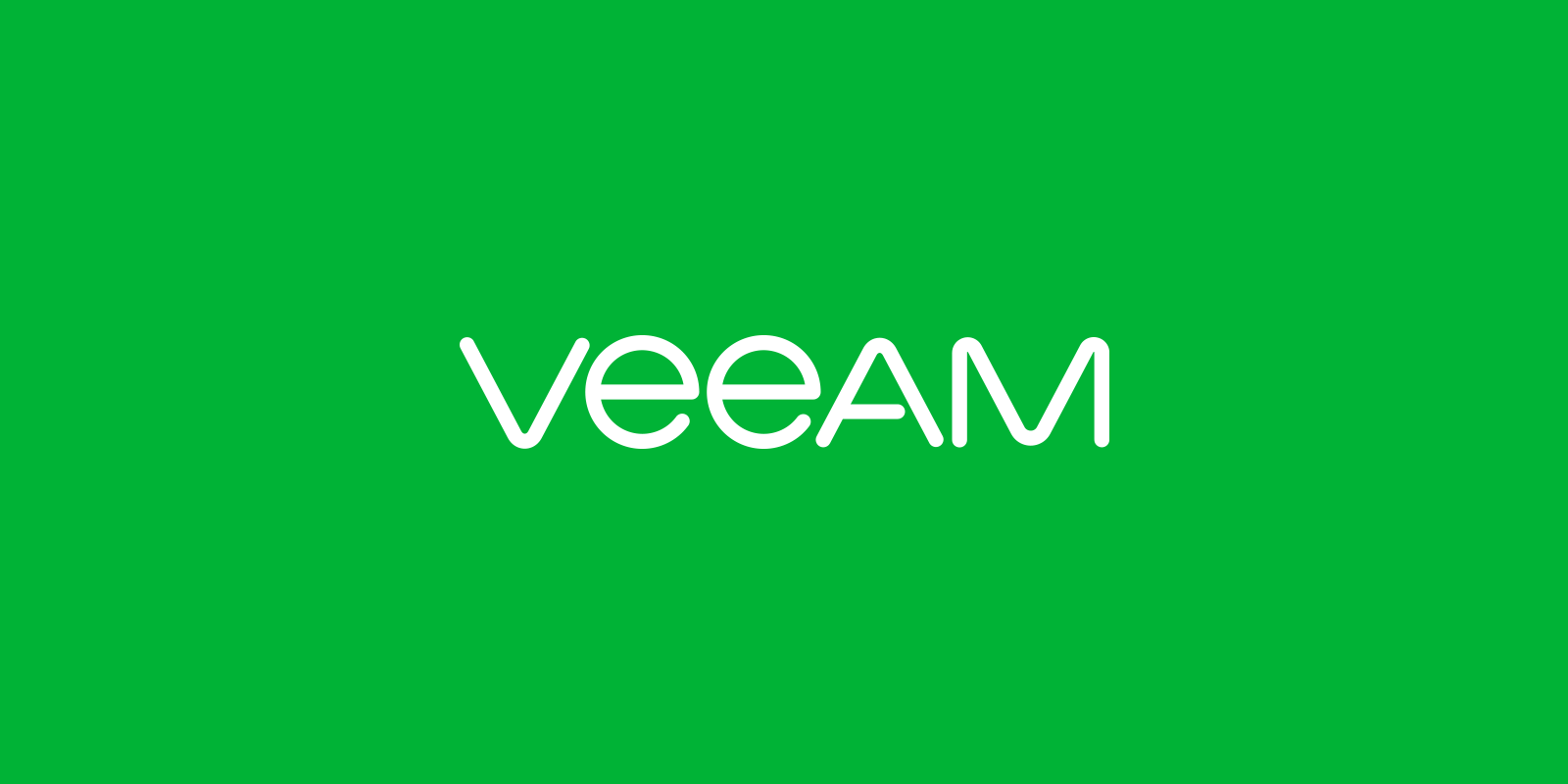
Signed Windows PV drivers
After years of work (and countless exchanges with Microsoft) we’re proud to announce that the XCP-ng Windows PV drivers are now officially signed and available for download.
Why is this such a major milestone? Because it means we can now officially distribute the drivers we build ourselves, with Microsoft’s approval. Even more importantly, as the upstream maintainer of these drivers, Vates is now the official reference for Open Source Windows PV drivers across the entire Xen ecosystem.
A huge step forward for both XCP-ng and Xen users alike!

Beyond 2TiB: Qcow2 open beta
The wait is over: Qcow2 support in XCP-ng is now entering public beta!
After years of relying on the legacy VHD format, this new milestone brings a modern and scalable storage foundation to XCP-ng. With Qcow2, you can expect larger disks, improved efficiency, and a path toward advanced features that simply weren’t possible before.
We’re incredibly grateful to everyone who tested the alpha builds and shared feedback — it played a key role in reaching this point.

Your feedback is crucial: the more we get, the sooner we can reach production! We are waiting for you in our forums.
October security & maintenance update for XCP-ng 8.3
This month’s update includes important security fixes for XCP-ng 8.3, along with several bug fixes and improvements that were pending release.
As always, we recommend keeping your hosts up to date to benefit from the latest stability and security enhancements.

Xen Community manager interview
This week on the FLOSS Weekly Podcast, Cody Zuschlag, Xen Community Manager, talks about the Xen Project, and naturally, about XCP-ng and Xen Orchestra too!
Exodata case study
Exodata partnered with Vates to build a sovereign, high-performance cloud infrastructure spanning multiple regions. In just a few months, they deployed nine independent platforms across six territories: from French Polynesia to mainland France.
Their success proves that open infrastructure can combine control, scalability, and reliability at scale.

XOA and the Vates Virtualization & Management Stack
It’s hard to believe, but we started selling Xen Orchestra over 10 years ago (almost 11!) as a standalone virtual appliance: XOA.
A lot has changed since then. We’ve forked XenServer (2018), built our own fully open virtualization stack, and helped thousands of users move away from VMware in the post-Broadcom era.
With the Vates Virtualization & Management Stack now established and growing fast, it’s time to sunset the legacy "standalone" XOA plans. The reason is simple: today’s market needs a coherent, integrated stack, not isolated components.
Of course, this decision does not affect XO from the sources: we remain fully committed to open source, and nothing changes for the community edition.

EasyVirt early bird offer for DC Scope & DC Net Scope
With our EasyVirt integration now in stable release, you can directly deploy DC Scope and DC Net Scope from your XOA!
To celebrate, we’re offering an early-bird deal so you can try (and maybe adopt!) these great tools.
For those unfamiliar:
- DC Scope helps you analyze virtualization usage, plan capacity, and spot optimization opportunities.
- DC Net Scope lets you visualize network flows, detect bottlenecks, and keep performance under control.
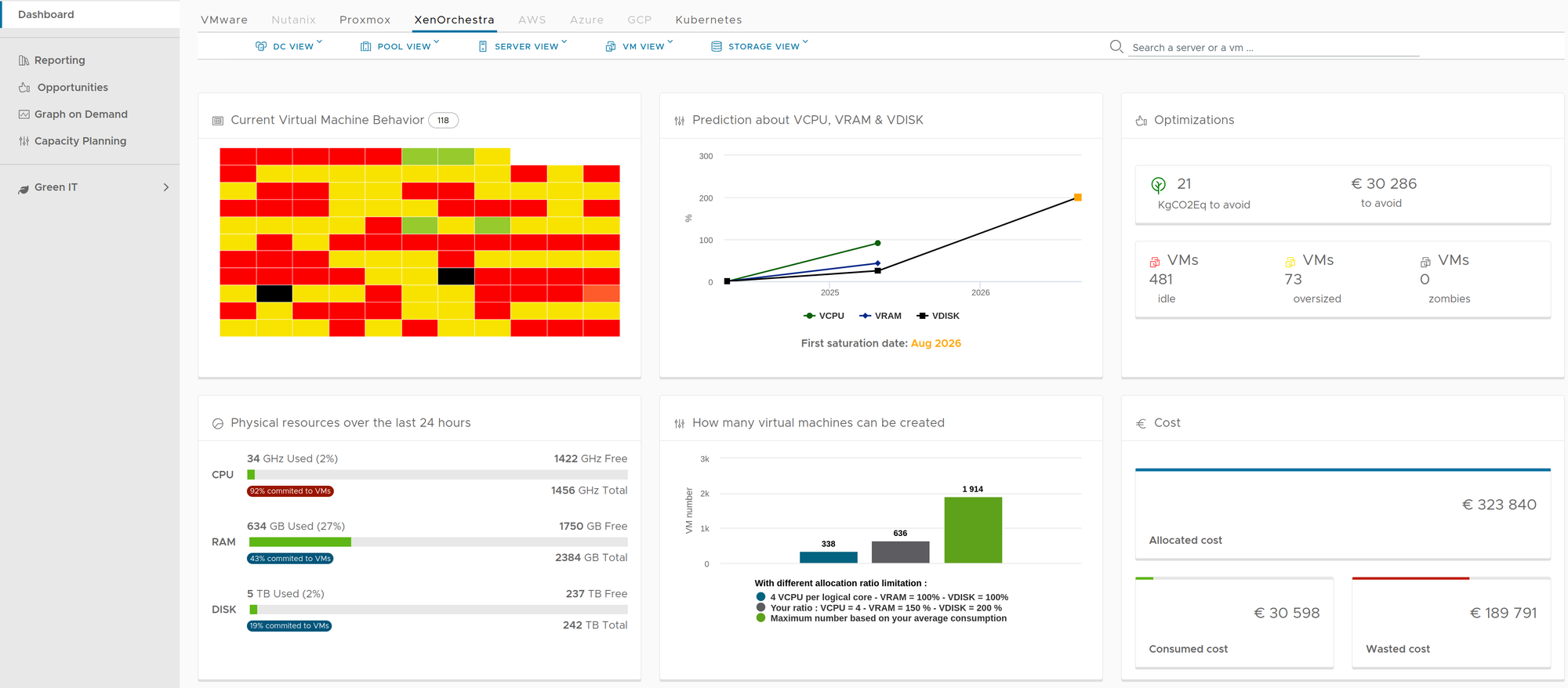
Together, they deliver deep, actionable visibility into your Vates VMS infrastructure — intuitive dashboards, native API integration, and deployment in just a few clicks.

🎫 Events
A new section, regarding events you could have found us, or you might find us in the future.
What's next
Some events you can see us directly in the next weeks or in 2 months tops.
🇫🇷 API Days (December 9-11, Paris, France)
We'll have a talk and a panel discussion there. If you are in Paris at those date, it's the opportunity to connect!
🇺🇸 KubeCon (November 10-13, Atlanta, USA)
We'll have a booth and we'll have some nice announcement there. More info at https://events.linuxfoundation.org/kubecon-cloudnativecon-north-america/
🇱🇺 Luxembourg Internet Days 2025 with C2D IT Solutions (November 18-19)
Our partner, C2D IT Solution, will attend and talk about our solutions.
We've been there
🇺🇸 Xen Summit 2025 feedback
A feedback on what happened during the last Xen Summit 2025, in San Jose, CA, USA. Don't miss it, it's an interesting read on our contributions in general toward the Xen Project!

XO 5.112
The 5.x branch is living its last few versions, and what a journey it’s been!
As we get closer to the official release of XO 6.0, each update brings us one step nearer to the next generation of Xen Orchestra
🛡️ Security
Each month, we prioritize transparency around potential security issues affecting Xen Orchestra. This regular communication helps everyone stay informed and protected.
As part of our ongoing work, we’ve also done another round of dependency cleanup and updates: reducing the potential supply chain risk in case of a compromised package.
VSA-2025-005: Redis vulnerabilities
Several new CVEs were recently published for Redis, which is used by Xen Orchestra:
CVE-2025-49844, CVE-2025-46817, CVE-2025-46818, and CVE-2025-46819.
After review, we’ve confirmed that Xen Orchestra is not impacted, due to its specific thread model and usage context.

And don’t forget to keep an eye on our VSA page — your centralized source for all security information across the entire Vates stack.
💾 Backup
This month brings several resiliency improvements to Xen Orchestra backups.
We’ve resolved a few long-standing edge-case issues that were difficult to reproduce, thanks to an excellent collaboration between the XCP-ng and XO teams.
Synchronous merge for mirror backups
We’ve added a new Merge backups synchronously option for mirror backups. When enabled, the merge process runs as part of the backup job, rather than asynchronously afterward.

This option is useful restarting a backup job, or when multiple mirror backup jobs are chained. It gives you greater control over backup timing and helps prevent potential merge-related issues in certain environments.
Rate limiter
Backup jobs offer customization over speed controls again. You can set a speed limit for full backups, incremental backups, replications, and mirror backups. This helps prevent network overload and ensures smoother performance during backup operations.
Additionally, we’ve reintroduced a timeout for XAPI reads, to make backup processes more reliable.
Fixed VDI_NOT_MANAGED error
A long-standing and rare VDI_NOT_MANAGED backup error has finally been fixed. This issue had been around for quite some time but only appeared in specific setups.
After in-depth debugging, the root cause was identified and resolved. Backups now run without interruption, even in environments where this error previously occurred.
Fixed: Backup job timeouts
We’ve resolved an issue where source-side timeout errors could cause backup jobs to hang indefinitely. Now, the job properly stops and reports the error, and you won't get stuck anymore.
🥝 Core UI
Core UI is the next-gen common UI for both XO 6 and XO Lite.
Treeview search loader
The treeview now displays a visual loader whenever a search is in progress. Previously, typing in the search bar could sometimes result in a brief delay before results appeared, so users were unsure if anything was happening.
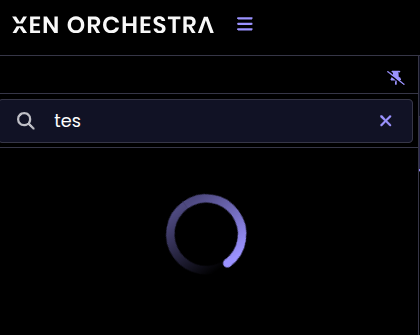
With this update, users receive instant visual feedback that their search is processing, making the interaction more responsive.
🛰️ XO 6
We worked hard this month to bring many more view in XO 6.
Backup targets views
XO 6 now includes a dedicated Backup Targets view, which lets you check all backup destinations configured in your environment, at a glance.
You can easily review, sort and organize all of your backup targets, right from this page, under your Backup Jobs.


Backup Targets page
Backed-up VMs view
In the Backup Jobs section, we've added a view for backed-up VMs. This view lists all virtual machines covered by existing backup jobs. As a result, you can easily check which VMs are protected and which are not.


Backed-up VMs view
Backup jobs Configuration page
We've added a brand-new Configuration page to the Backup Jobs section:
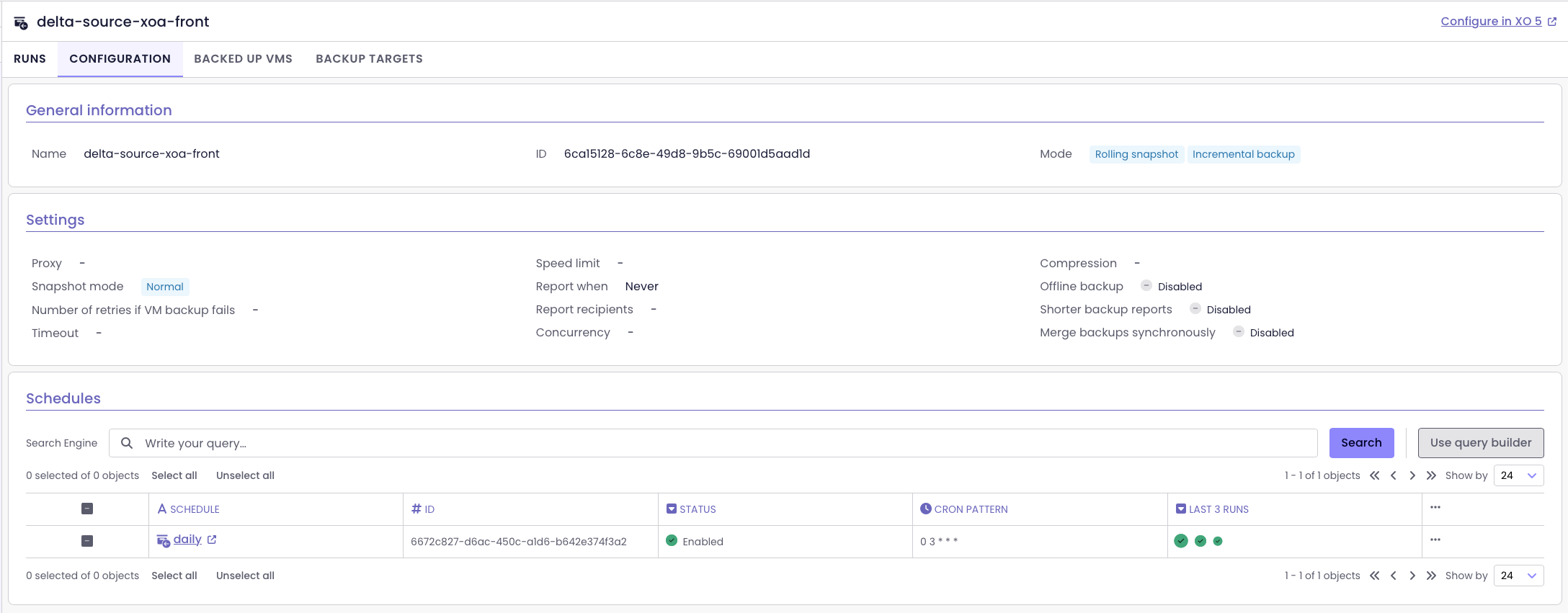
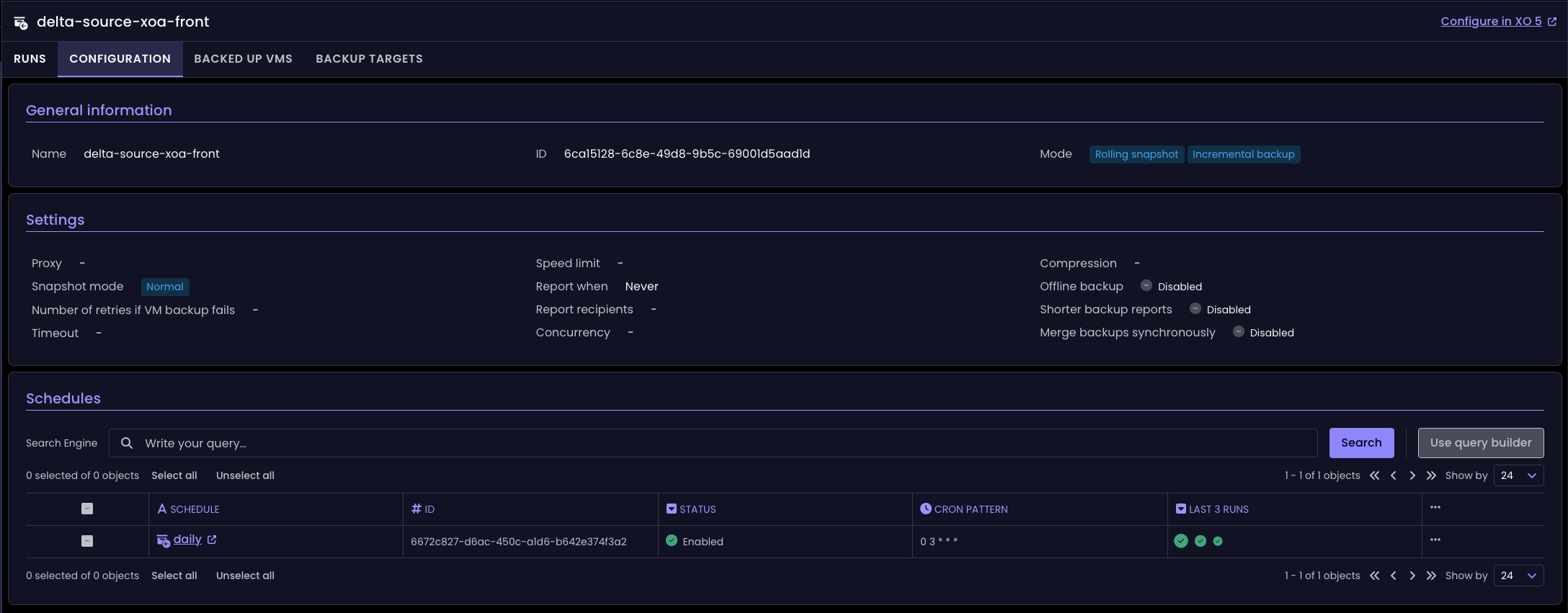
New Configuration page in the Backup Jobs section
It lets you easily review and adjust key backup settings, such as schedules, retention policies, and destinations.
Improved user menu
We added more links in the user menu, so we can guide you more easily in various things, giving quick access to important resources.
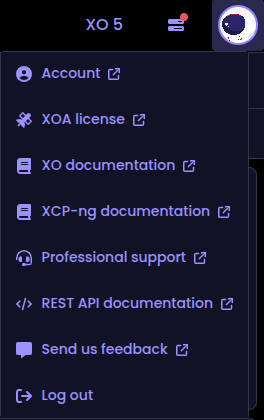
Ready for large scale infrastructures
The user interface has been completely reworked to handle massive environments without slowing down.
The biggest improvement comes from virtual lists: instead of loading every single item in the DOM (for example, thousands of VMs or alarms), XO now only renders what’s visible on screen and loads more as you scroll. This is particularly effective when XO handles Treeviews, Alarms and QuickTasks.
In practical terms, that means you can now browse environments that were previously impossible to load in your browser.
Before this update: Large setups with thousand of hosts and tens of thousands of VMs could cause your browser tab to freeze or crash, consuming several gigabytes of RAM.
Now: The same environment (for example, 200 hosts, 1,000 VMs, and 60,000 alarms) uses roughly 500 MB of browser memory instead of several gigabytes. Even at 10,000 VMs and beyond, XO 6 remains responsive while still having an initial load time between 10 to 100 times faster than XO 5.



Resource usage graphs for 100, 1,000 and 10,000 VMs
🪐 XOA
We updated our XOA image to contains all the dependencies needed to use V2V out-of-the-box!
📡 REST API
We’ve reached a major milestone: the REST API has now become the solid foundation of XO 6, powering the next generation of Xen Orchestra.
Migration to swagger completed
It took us some time. When we first started to develop the REST API, we didn't use the Open API standard. But we've seen how great it was, helping to directly generate an interactive documentation (Swagger). So we took the job seriously and we decided to rewrite the existing REST API endpoints to be Open API compatible, while write all our new endpoints directly for Swagger.
And after months of hard work, we are proud to say it's finally done! Now all REST API endpoint are exposed in Swagger. Kudos!
Multiple endpoint migrations
We've migrated several endpoints, such as: tasks, delete/put tags, and messages. They're now all available under a unified structure, for all XAPI collections (/:collection/:id).
New PBDs endpoints
The API now includes PBDs (Physical Block Devices), so you can query and manage storage connections between storage repositories and hosts directly.
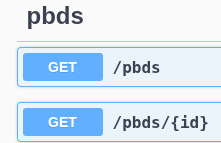
This simplifies the process of integrating storage management into automation workflows or external tools.
Backup archives
You can now list all your existing backups from the REST API.
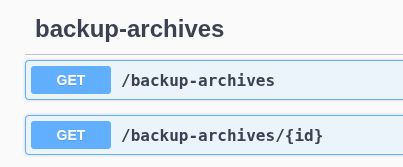
Basic Auth support
The REST API now includes Basic Auth for authenticated requests. You can now easily integrate Xen Orchestra with external tools or scripts that rely on standard HTTP authentication. This is big, because it means there is no need to generate a token from the UI or previous API as before! The REST API become self-sufficient for almost all your tasks.
How it works: Basic Authentication is a simple way to authenticate directly through HTTP headers. Each request must include an Authorization header, containing your credentials encoded in Base64.
The format is: Authorization: Basic <base64(username:password)> .
For example, if your username is admin and your password is admin, the Base64 encoding of admin:admin is YWRtaW46YWRtaW4=.
As a result, your request header should look like this: Authorization: Basic YWRtaW46YWRtaW4=.
For example, with
curl, you can simply run: curl -u admin:password /rest/v0/vms .Ping endpoint
It sounds trivial but it's a very important feature to check the sanity of your XO instance.
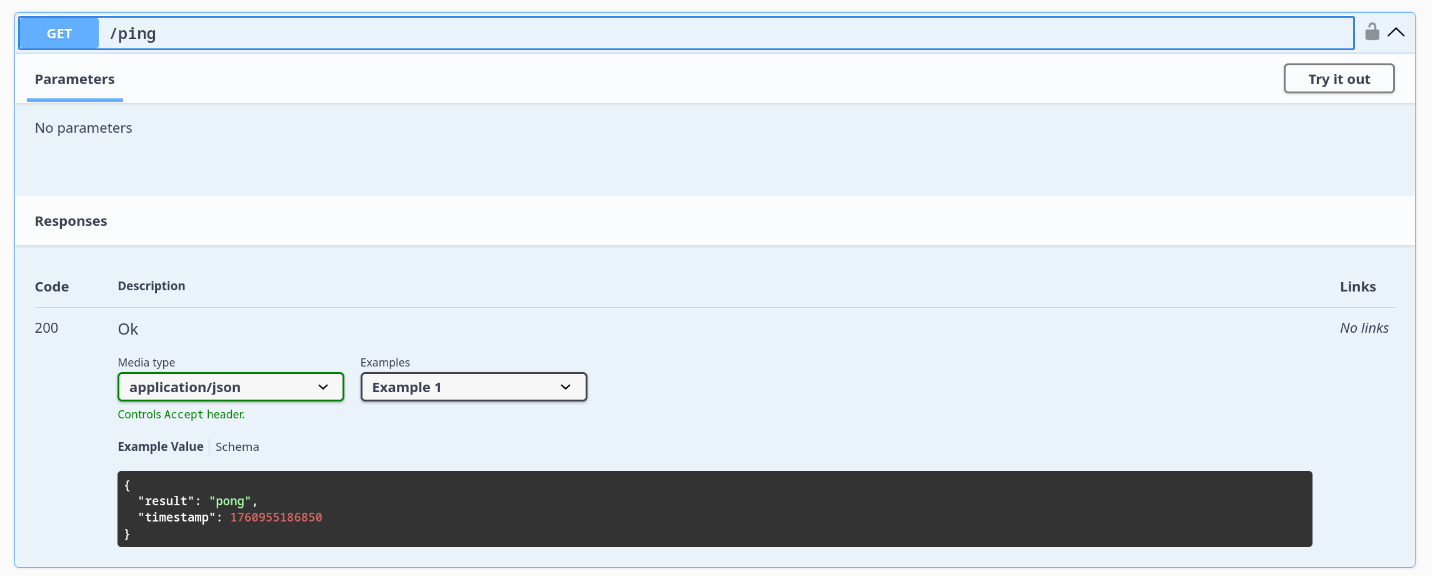
☸️ DevOps Tools
Continuous progress on our DevOps tooling ecosystem, expanding integrations and refining automation around the Vates stack.
Terraform provider v0.36.0
The Terraform provider for Xen Orchestra has been updated to version 0.36.0. This release focuses on better stability, updated dependencies and exposing the boot_firmware for templates.
If you use Terraform to manage your Xen Orchestra resources, upgrading to this version is recommended for a more reliable and up-to-date experience.
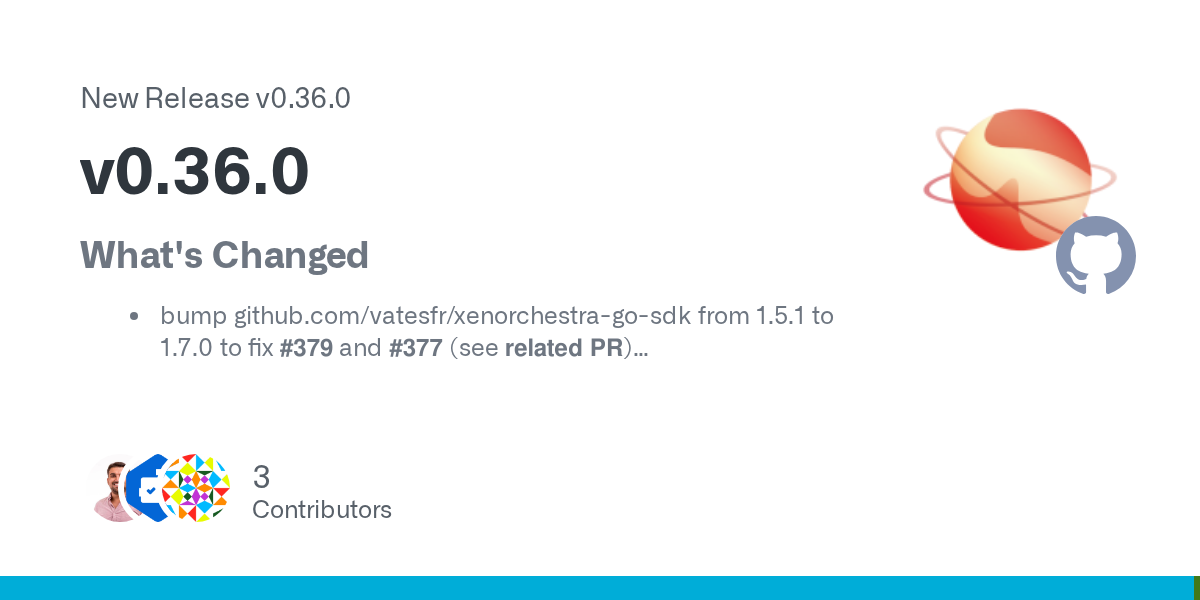
Xen Orchestra Go SDK v1.7.0
With valuable help from our contributors, the Go SDK for Xen Orchestra has been updated to v1.7.0, with several key improvements:
- New feature: You can now expose boot parameters directly in templates (thanks to sakaru).
- VM creation fixes: The SDK now handles existing VDB positions more reliably and automatically excludes the CD drive during VM creation (thanks to gCyrille).
- Legacy support: Added a v1 legacy client alongside the main "v2" interface, simplifying migration for existing integrations (thanks again to gCyrille).
If you’re integrating Xen Orchestra control into Go applications, upgrading to v1.7.0 delivers smoother functionality and enhanced template management.

🐦 VMware to Vates (V2V)
Our V2V migration tool keeps improving every month — this release brings better handling of edge cases and smoother transitions for even more VMware environments.
2 TB+ disk support on qcow SRs
Good news if you're migrating large VMware VMs: Xen Orchestra now allows you to import disks larger than 2 TB when the destination SR uses the qcow format.
Before, large disks of this size couldn’t be imported properly because of restrictions in certain storage backends. With this update, as long as your SR supports qcow, you’re good to go, even for disks well beyond the 2 TB mark.
This feature works out of the box, no additional configuration is required.
Fixed: Stopped VMs getting locked
When performing a V2V migration, imported VMs are locked in anticipation for. for a future resume. However, stopped VMs were also locked, which prevented them from restarting after the transfer.
We've fixed this behavior. Stopped VMs are no longer locked, so that migrations can go on smoothly. Thank you to our community for reporting this issue!
Fixed: Server thumbprint computation
We resolved an issue where Xen Orchestra could fail to compute the server’s thumbprint during V2V imports, which caused the process to stop prematurely.
The thumbprint calculation now works as intended. V2V imports are now smoother and more reliable, with no interruptions.
📖 Documentation & guides
Documentation is essential, and we’re glad to highlight the growing effort we’ve been putting into it.
New dedicated Terraform documentation
Our Terraform provider now has its own detailed documentation: with examples, configuration tips, and usage guides to help you automate your Vates infrastructure with ease.
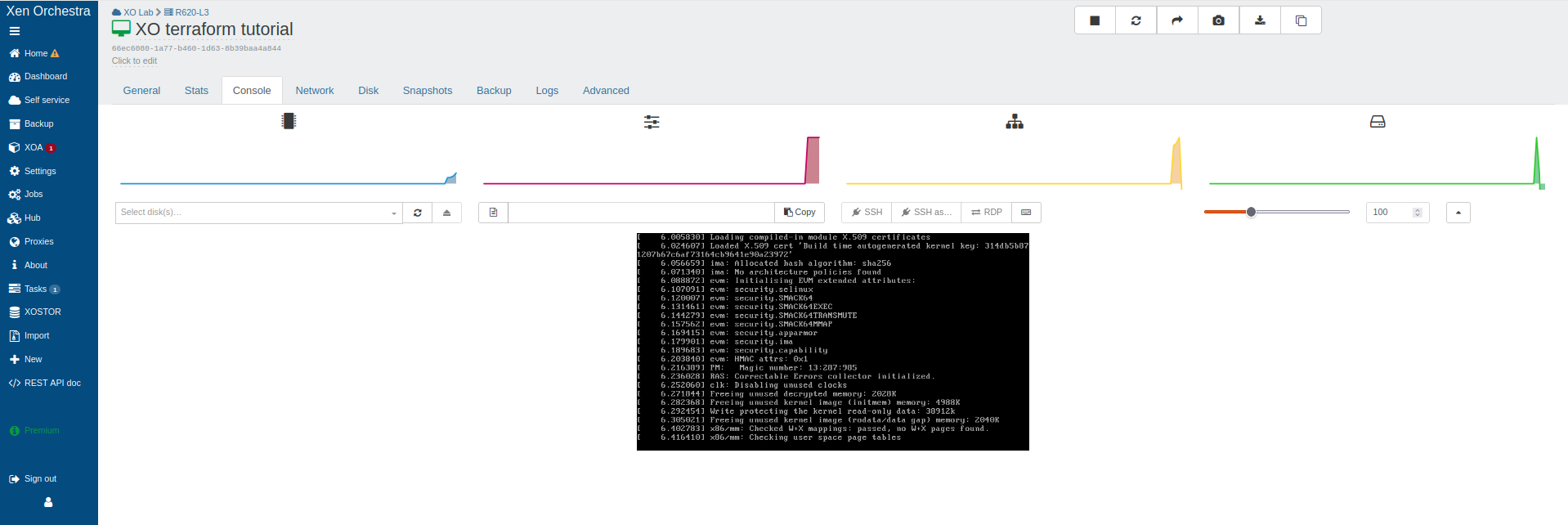
Configuration file path
The documentation now explicitly specifies the location of the Xen Orchestra configuration file (/etc/xo-server/config.toml). Previously, instructions just said to "modify the config file", without indicating its exact path, which could lead to confusion during setup or troubleshooting.
This update helps you quickly locate and modify the correct file, for easier configuration and maintenance.
OpenFlow XAPI plugin usage
The SDN Controller documentation has new information on the OpenFlow XAPI plugin. It explains how to use the plugin, from setup to configuration and practical usage.
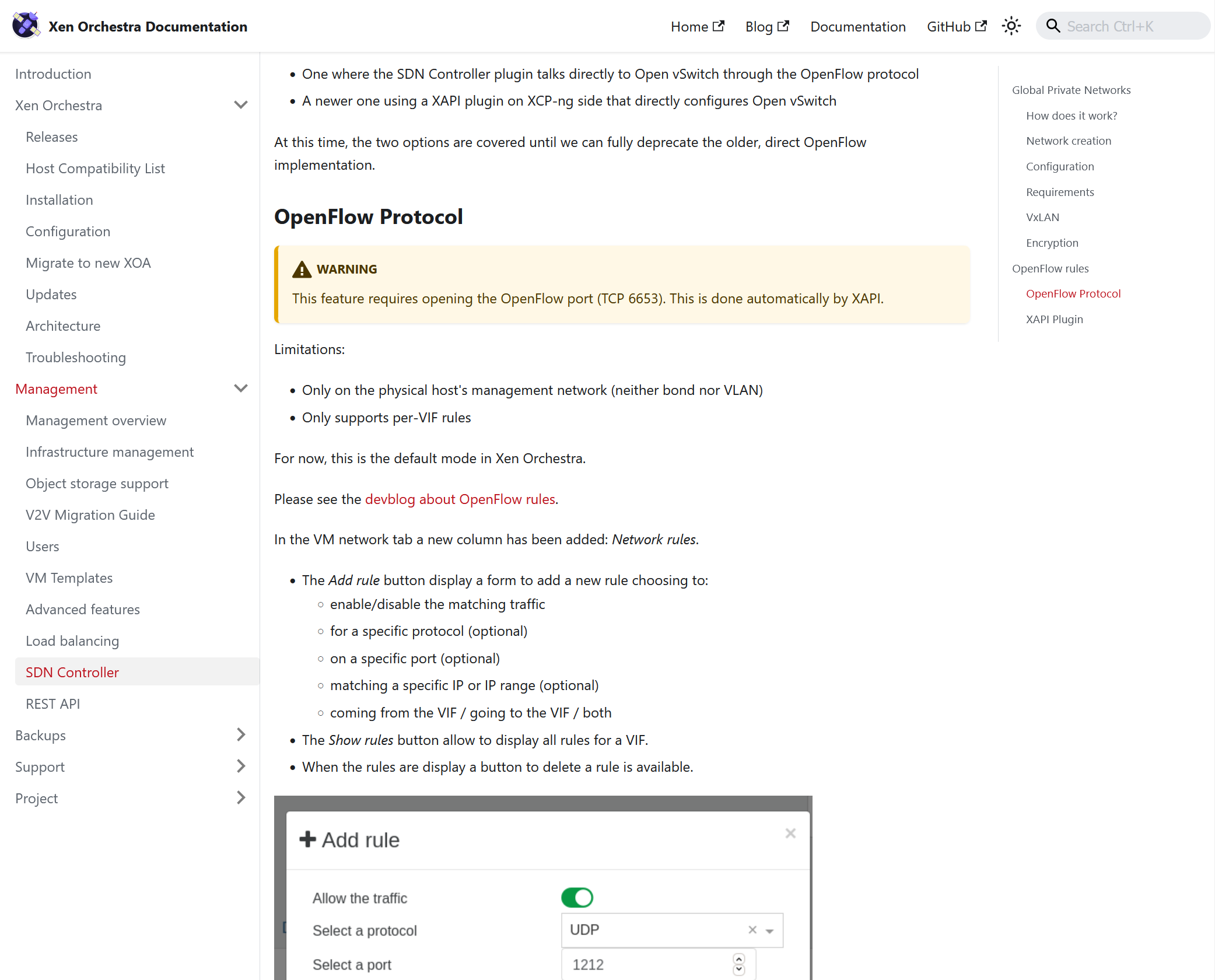
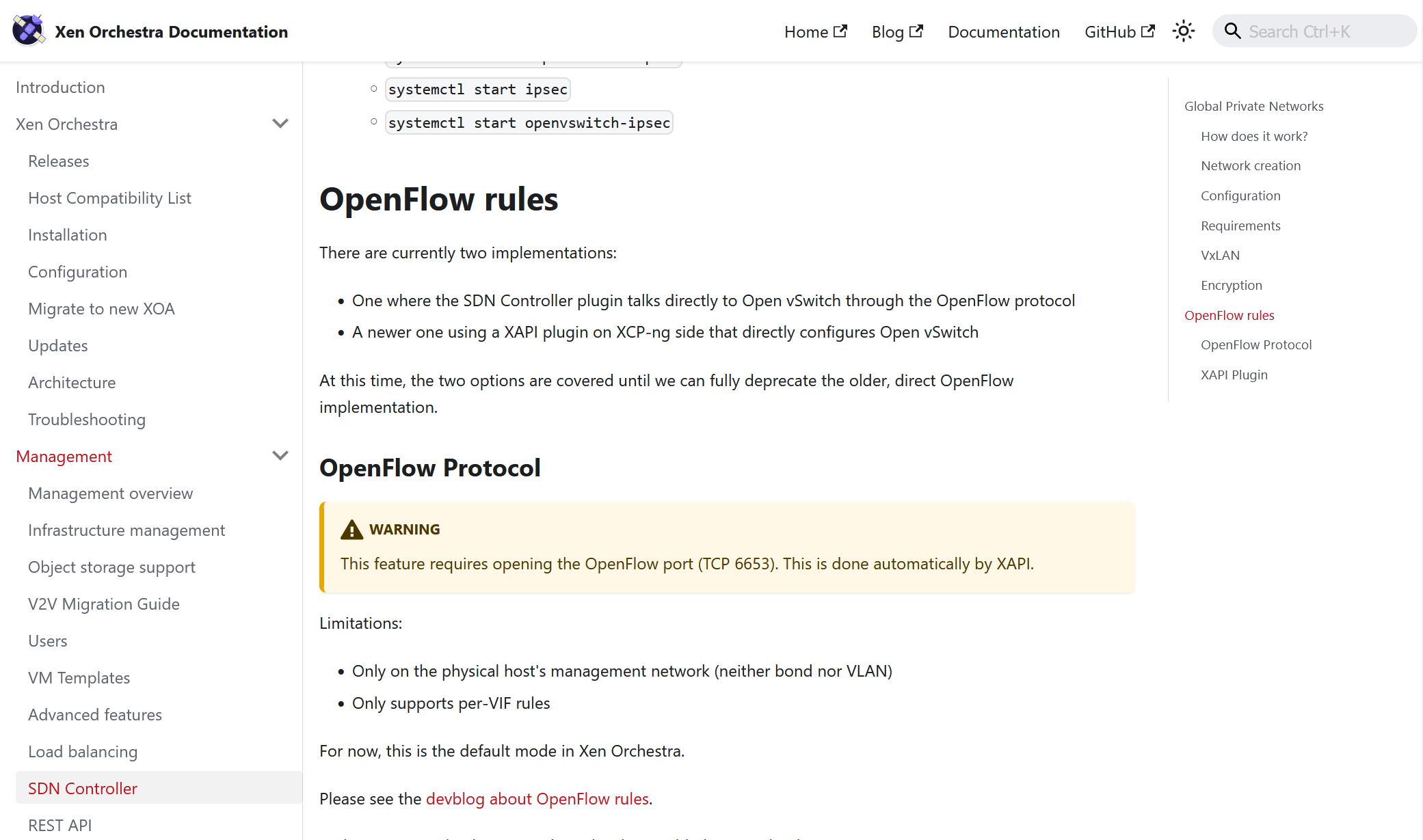
OpenFlow plugin documentation
This update builds on the existing SDN Controller page, with a clear guide for anyone wanting to manage network flows programmatically through Xen Orchestra.
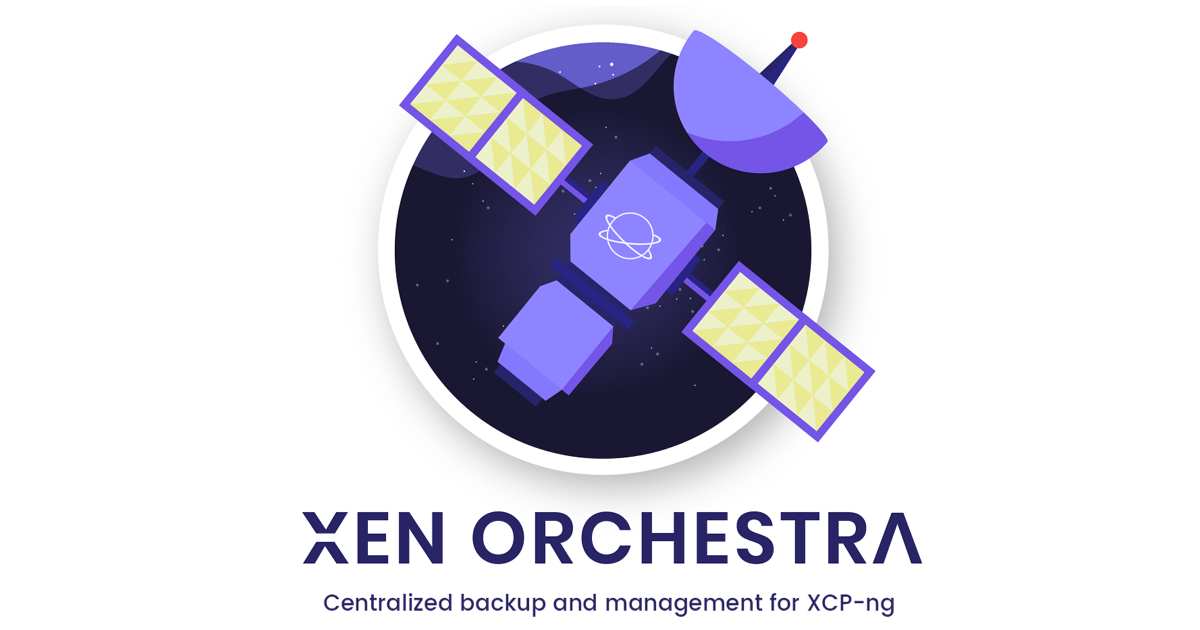
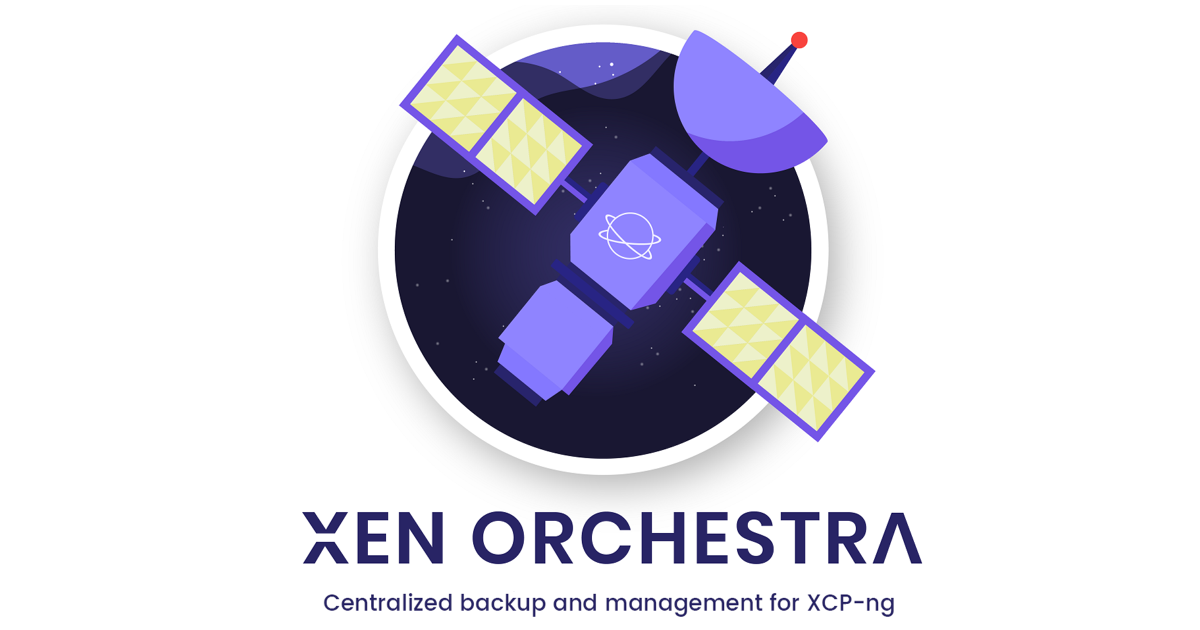
Updated HA documentation
The High Availability section of the XO documentation has been expanded, with practical information on how to set up and use HA effectively. In addition, this section now links to the up-to-date version of the XCP-ng documentation (instead of the XCP-ng blog posts).
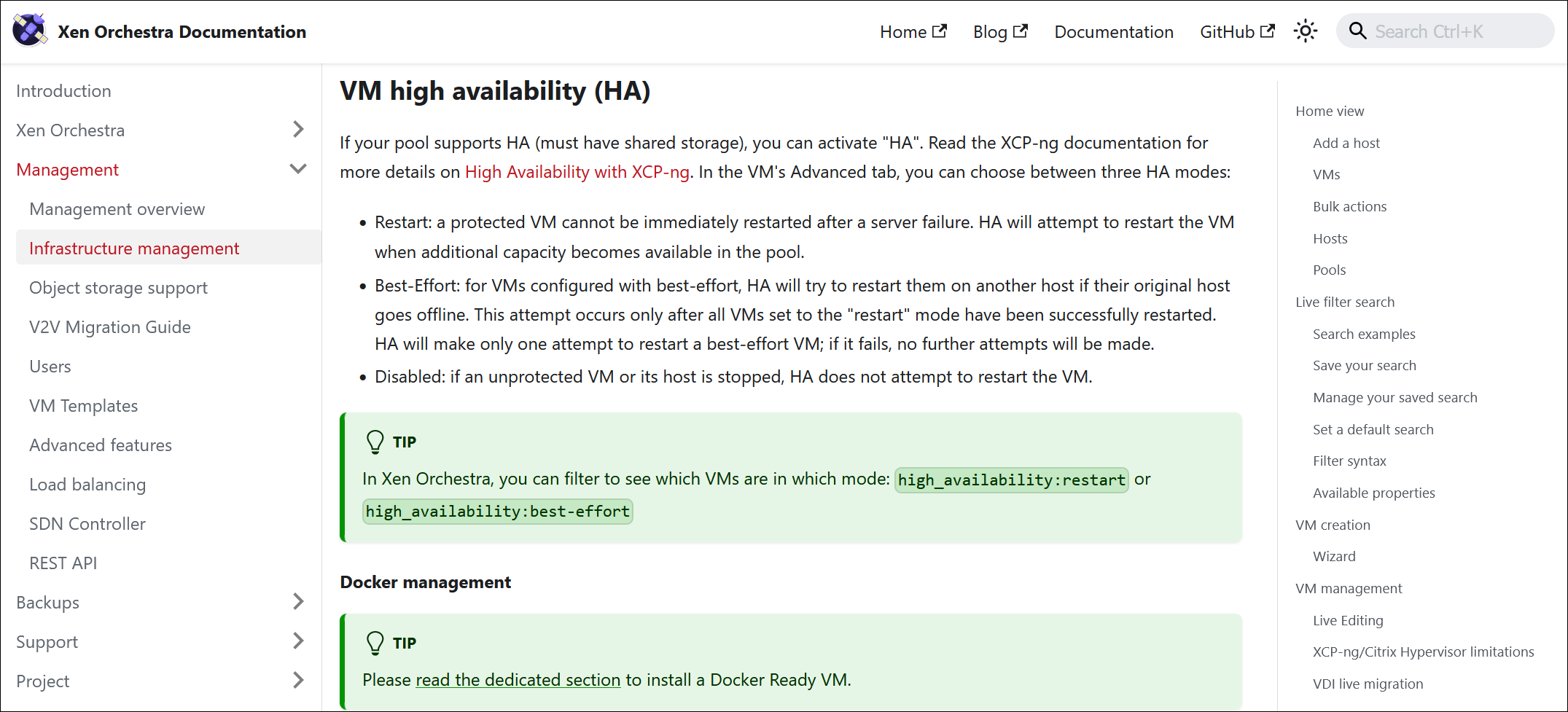
These updates ensure that anyone configuring High Availability can follow the latest best practices and depend on precise, practical guidance.
EasyVirt documentation
We’ve expanded the Vates VMS documentation with a dedicated page on integrating EasyVirt’s DC Scope and DC NetScope solutions with Xen Orchestra.
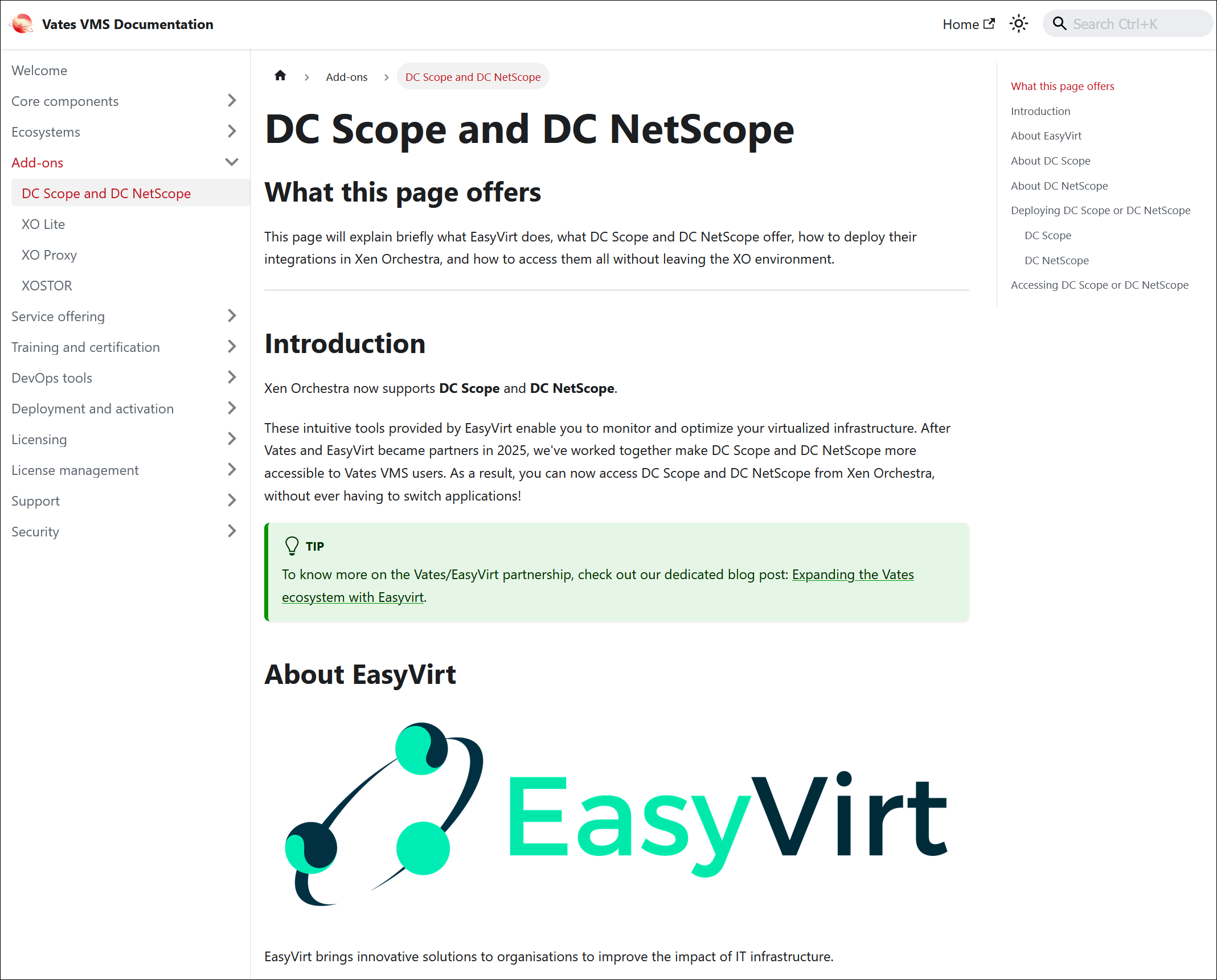
This new resource provides setup instructions, usage guidance, and key integration details.
Missed the announcement about our new Vates VMS documentation platform? You can find all the details in the blog post for the previous release:

🔦 Community spotlight
If you contributed anywhere in the Vates stack, feel free to let us know, we'll be happy to showcase your contribution in here!
Xen Orchestra inventory
For those who want to export their infrastructure inventory into a CSV, wmazren on Github, created a script to do exactly that! He posted a demo in our forum, and you can find the code in this following repository:
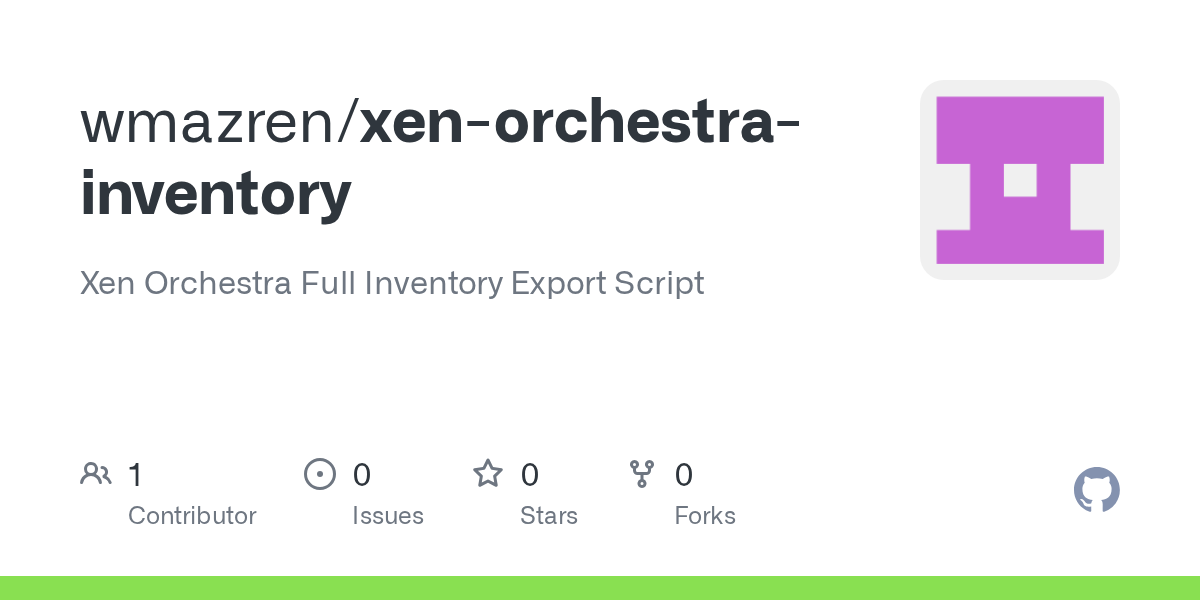
Dell Open Manage Appliance (OME)
A new version of Dell Open Manage for XCP-ng is now available, thanks to Cécile. More info in the following thread on our forums:
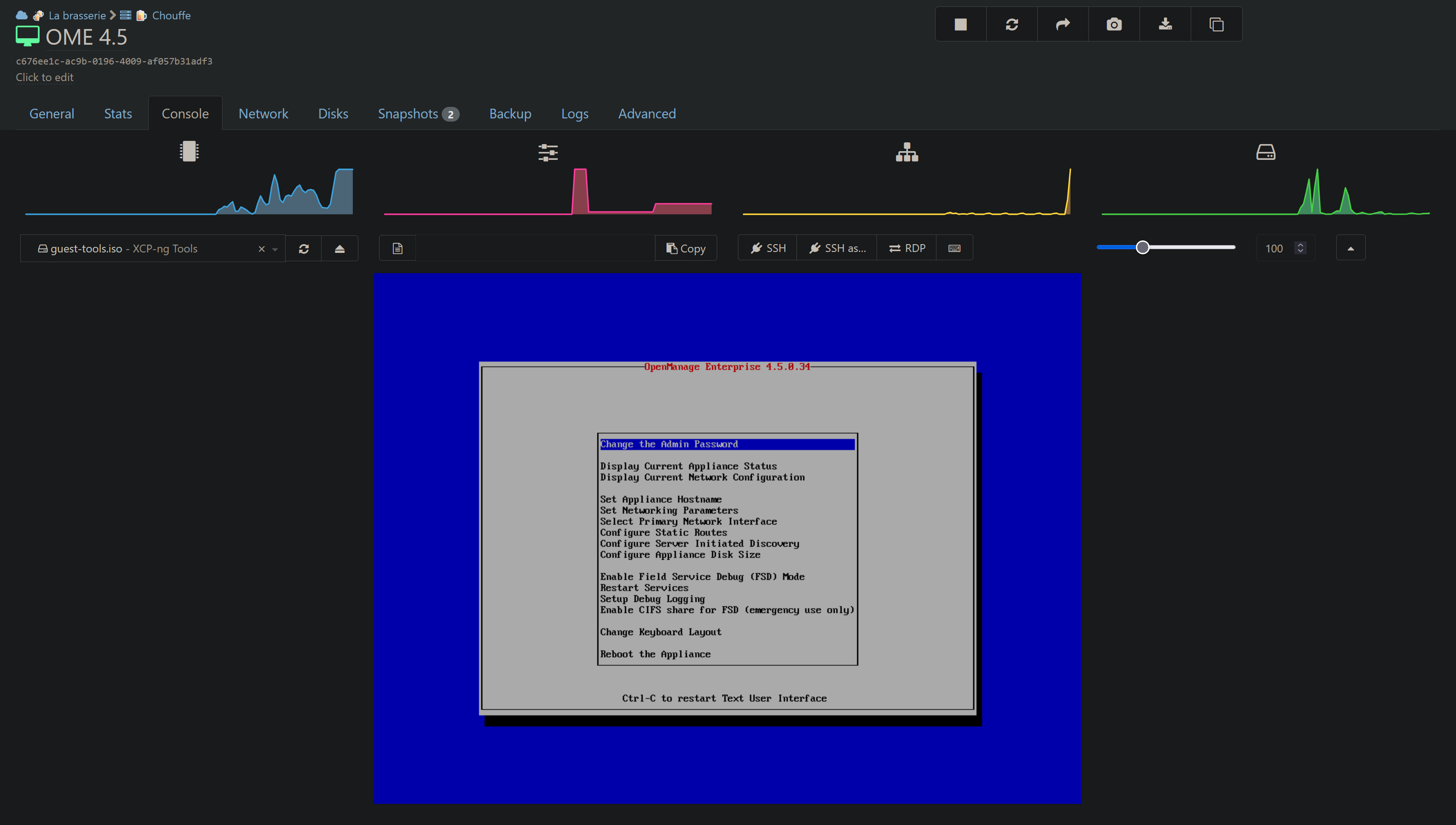
🌐 Translations
Those translations are directly embedded in XO Lite and XO 6, thanks to weblate.
10 languages updated
A big thank you to our community for their ongoing efforts in translating Xen Orchestra!

This month, special attention was given to Brazilian Portuguese, Czech, Dutch, Farsi, French, German, Spanish, Russian, Swedish, and Ukrainian.
Want to help translate Xen Orchestra or improve existing translations? You’re more than welcome to join in here.
🆕 Misc
And finally, the Misc section: a mix of smaller additions and quality-of-life improvements that come on top of all the great work above! 🎁
Bug report extraction
You can now generate and retrieve XCP-ng/XenServer system status (bug reports) directly from a host or pool, whether through the API or xo-cli. This eliminates the need to manually connect to each host of a pool. To do that, use one of the following commands:
host.getSystemStatus- Download system status from a single hostpool.getSystemStatuses- Download system status from all hosts in a pool in parallel
With this update, admins can trigger the archive creation and download it in a single step. Support becomes easier, as well as troubleshooting workflows.
IPMI data for Lenovo servers
Following support for 2CRSi and Dell hardware, Lenovo servers now join the list!
You can now access IPMI information including the management address, total power usage, PSU and fan status, and the most useful temperature sensors: all directly from Xen Orchestra.

NetBox v4.4.x compatibility
XO 5.112 is now fully compatible with the latest NetBox 4.4.x releases, ensuring smoother integration and improved interoperability with your infrastructure management setup.

















